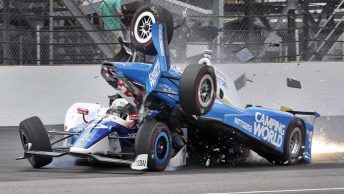
JAN TEGLER: The 101st running of the Indy 500 was another great race. Andretti Autosport’s Takuma Sato claimed victory after a 10-lap dice with Team Penske’s Helio Castroneves.
Andretti Autosport’s drivers and their Hondas looked good all day, occupying most of the top positions through the race but engine failures for Ryan Hunter Reay (leader of the most laps) and Fernando Alonso combined with pit-crew mistakes for Alexander Rossi and Marco Andretti took several bullets out of their gun. Ultimately Sato came through for the team, giving Andretti Autosport its second consecutive 500 win.
Scott Dixon was one of the other Honda-powered drivers who ran at the front until lap 53 when Jay Howard’s Schmidt-Peterson Motorsports Honda hit the wall in Turn 2 and slid back across the track into Dixon’s path. Scott had nowhere to go and hit Howard’s car (Howard’s last IndyCar start was in 2011). The contact launched his Ganassi-Honda into the air and the catch-fence between Turns 1 and 2. The car also contacted the wall below the catch-fence before landing on its wheels on track.
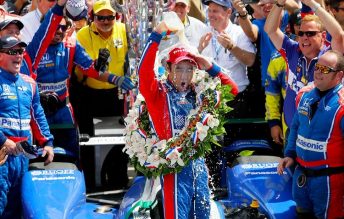
It was a scary accident which Scott is fortunate to walk away from. How did he view the race and how’s he feeling?
STEFAN JOHANSSON: Scott started the race with the car pretty trimmed out in preparation for the last 20 laps shoot out. That’s really what you have to prepare for and you’ve just got to hold onto the car for the rest of the race and get it as balanced and dialled in as you can for the gun fight at the end. I have no doubt he would have been right there.
He was very loose during the first stint and they took some downforce off the front wing at the first pit stop and the car started to get pretty decent. One more stop and a further tuning of the aero and I think he would have the car where he wanted it to be.
The accident was crazy and scary. Indy is always a dichotomy. It’s the hardest race to win and in some ways it’s also the easiest race to win. You can have speed all day long like Scott did a couple years ago and then a trash bag ends up in the radiator inlet with 10 laps to go and his engine just shuts down on him. Or you can come from seemingly nowhere all day and win if you’re on the right fuel strategy at the end, like Rossi showed last year.
I’m not saying Scott would have won this year but I think he would have definitely been in the mix at the end. I think Alonso would have been there too and for sure, Ryan (Hunter Reay) would have. There were a lot of strong cars up front and it would have been a mighty ending if Scott, Alonso, Rossi and Ryan had all been there together with Helio Castroneves and Sato in the last few laps.
But coming back to the accident, unfortunately you’re always going to have a few guys in the field who really aren’t quite up to speed no matter what the category is. The lack of race craft some of these drivers have is a mystery, it’s like they lack all common sense.
If you’re not on the pace for whatever reason or you are already laps down it really isn’t that hard to just gently roll out of the throttle before you get to a corner? You lose a few tenths on a lap, maximum. You let the faster car go by and continue instead of charging into the corner and then end up fighting for a piece of real estate in the middle of a corner – and then blame someone else for pushing you up into the grey. He should have never put himself in that position to begin with, at that point he was already up the track in the grey and it ultimately it’s what caused his accident. All he would have had to do is roll out of the throttle by four or five MPH before he got to the corner and those guys would have gone past and it would have been fine.
If you’re already two laps down you have no business trying to meddle with the race leaders, as you have no chance of making up the lost time on speed, the only chance you have at that point is to hope for a yellow and use clever strategy to gain you laps back. As it were, Scott ended up being the front runner who got caught up this time, it could have been anyone who happened to be in the wrong place at the wrong time.
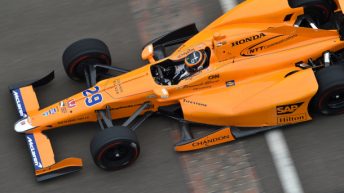
JT: There’s always excitement at Indy but it seemed to have even more energy this year with Alonso on hand, another huge crowd and lots of notable people there. What were your impressions?
SJ: Indy was tremendous as it always is. I think it’s getting better and better; it’s really starting to get the buzz back that it used to have in the days before the split. Few places in the world, if any, no matter where they are or what event they have, have the energy and electricity that Indy has. When you stand on the grid before the race it’s something really special.
Andretti’s probably the best team at the Indy 500 right now. They had six potential winners. Every one of their cars could win the race. No other team had anything close to that. Whatever it is they’ve done to their cars they definitely seem to have found the magic bullet for that track.
Alonso’s presence was great and added a lot of extra buzz and excitement from the F1 community also, hopefully it will open the eyes to a lot of his fellow drivers how great this event is and how good Indycar is in general.
JT: I think it was a unanimous view that Fernando Alonso did a great job at Indy and raced very well.
SJ: Yes, there’s no question he did very well. But to be honest, I didn’t expect anything else. I would have been surprised if he didn’t do a great job. I think he’s maybe the best driver in the world still, at least in terms of his race-craft. In the early stages of that race, everyone is fairly polite. But after the last pit stop, that’s when it starts to get a bit dicey. That’s when the racing really starts, it would have been great to see him duke it out with all the other guys at the end.
You have to get the car right to start with, and if you do that – I mean, I qualified 5th my first year (1993, Stefan out-qualified fellow rookie Nigel Mansell who started 8th) there in the old Bettenhausen car with a fairly stout grid. There’s no doubt that the Andretti cars were the class of the field so Alonso had a good car and he made the most of it in a situation where you really have to race.
I think Lewis Hamilton’s comments about Alonso were ill informed (Hamilton said of Alonso’s qualifying 5th … “A great driver, if he cannot win in Formula 1, will look for other races to win. But to see him fifth against drivers who are (in the series) all year is… interesting.”).
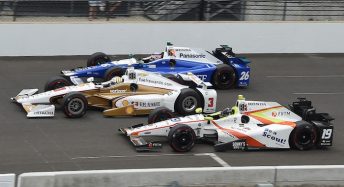
It just shows the ignorance and arrogance toward anything outside of Formula 1 that most people in the F1 paddock have unfortunately. They don’t even have a clue how hard some of these other championships are. In F1, if you’re in the right car, it’s easy. I can’t think of an easier championship to be good in. If you’re in the best car, you’re going to win – simple as that or at worst finish 2nd. And just because the top drivers in all these other categories of racing never made it to F1 doesn’t mean they’re not any good. A good indicator of this is when the F1 teams put some F3 kid in their cars for the end of season tests and within less that 30 laps they are doing lap times that are the same as the regular drivers who in some cases are world champions. The cars are simply too easy to drive and have too much engineering and technology for the drivers to make any real difference.
There’s never ever been a world champion who wasn’t in the best car. It’s the nature of the beast. Everyone in F1 builds their own cars so there will always be one or maybe two cars that are better than the rest. In IndyCar, nearly anyone can win at any race depending on how they play strategy and who gets it right on the day. At the end of the day, you have to become a specialist in every category you race in. It’s relatively easy to get to 95 percent but it’s that last five percent that makes the difference between being really good and winning.
JT: Interestingly, apart from Castroneves’ good performance in the race, Team Penske was off the pace all weekend.
SJ: Yes, I was surprised that Castroneves managed to pull himself up that far. Penske was struggling the whole time, really. It’s strange. Ganassi was a bit like that last year too, I think the Chevy package in it’s current format is very difficult to get right around there.
On the other hand, you have to admire Andretti Autosport. They’ve come a long way as a team in recent years and have turned into a very impressive organisation. They have a good number of cars and sponsors. It’s impressive.
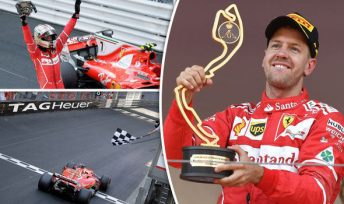
JT: The Monaco Grand Prix was, as usual, a largely boring procession. Ferrari’s Sebastian Vettel won by staying on course longer than team-mate Kimi Raikkonen and emerging from the sole pit stop in front. A similar scenario took place at Red Bull Racing where an early pitting Max Verstappen lost his position to team-mate Daniel Ricciardo when the latter stayed on track longer. Why would anyone pit early and give up track position at a grand prix where track position is everything?
SJ: Yes, it was the usual Monaco snoozefest. The layout of the track is such that we know it’s never going to be any different unless it rains or something unexpected happens that the boffins behind the computer screens can’t plan for. The only interesting bit was that Ferrari and Red Bull got the strategy wrong for the drivers who should have had a choice of strategy – Raikkonen and Verstappen.
It’s clear that staying out longer before stopping was an advantage this time. It’s interesting to follow and it seems that there is less and less of the ‘seat of the pants’ race strategy calls that we used to see from Ross Brawn and Schumacher for example where there used to be a constant dialogue and decision were made depending on the conditions as the race unfolded. It would seem that none of the people doing the engineering today in F1 have that type of race experience or race-craft. They’re all brilliant and geniuses in their own way but when it comes to race strategy it’s all theoretical for them.
And it seems that the drivers are simply following a set plan and have very little room to manoeuvre in terms of how the race is called. Only the driver can feel how the tyres are holding up and how hard he can push, if the car feels good and you can go hard you want to stay out as long as possible, especially if you have a clear track and there’s no cars to lap in front of you, but it seems the strategy was already set and both Kimi and Verstappen came in on whatever lap was already determined before the race even started. In this case it lost them a win and a podium. I would have been pissed off too!
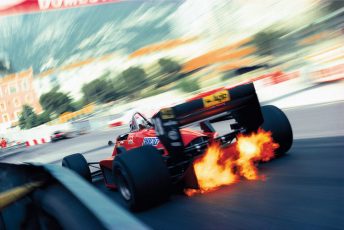
A couple years ago I was in the Ferrari pit with the radio headphones on during qualifying and what really surprised me was that the drivers don’t say one word when they return to the pits. The engineers are effectively telling them what the car is doing and what changes they plan to make next. I didn’t listen during the race but if I’m the driver in Monaco and the car still feels alright and the tyres aren’t going off, and I’m still doing good lap times, I would say, “I’m staying out”.
If the tyres are still performing that gives you way more leverage toward the end of the race and you can monitor what other people are doing. If no one’s going faster – they were all slowing down actually – you stay out. The only reason you would pit early there is if you were stuck in traffic. That’s all the more reason why Vettel and Ricciardo with a clear track after Raikkonen and Verstappen pitted went faster. Of course they would. The only danger is a full course caution if everyone else has pitted and you haven’t.
JT: Jenson Button substituted for Fernando Alonso with McLaren at Monaco and qualified well, starting 9th on the gird ahead of team-mate Stoffel Vandoorne. He crashed out of the race attempting to overtake Sauber’s Pascal Wehrlein but adapted to the new car pretty quickly.
SJ: I think he did a great job. He qualified quicker than his team-mate and in the circumstances he performed well. Unfortunately he had to start from the back and starting from the back at Monaco it’s near impossible to do well. You can be five seconds a lap quicker than the guy in front of you, literally, and there’s still no way to pass. The whole track curves the whole way around and there’s only one line so there’s almost nowhere to get a run on someone ahead – even on corner exit.
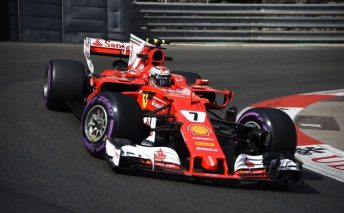
JT: Ferrari’s performance at Monaco showed their continuing improvement. Meanwhile, Mercedes GP struggled. Adapting to the 2017-spec Pirelli tyres is an ongoing issue for Mercedes. Again, you point to Sebastian Vettel’s preseason tyre testing as a big part of the difference in the two top teams’ performance.
SJ: It’s clear that it’s all down to the tyres right now. Again, it boggles my mind that teams like Red Bull and Mercedes didn’t force their regular drivers to do all the tyre testing. How can you put a junior test driver in a car to do just about the most important testing you do all year?
You are strictly limited on any test days to begin with and tyres are the most critical component you have in terms of getting the car dialled in. You can simulate most of the engine and the chassis to a pretty accurate level these days but the tyres is as much about feel as anything else and variables change all the time due to track surface and conditions. What else could the regular drivers possibly have to do that’s so important that they can’t attend those less than 10 days total of testing?
There’s no doubt in my mind that whatever input Vettel gave Pirelli is directly translated into the tyres on the Ferraris. Of course they’ll suit the Ferrari better because he’s the one who gave them input! How can you expect a 17-18 year old F3 driver to figure out what’s going on with a tyre? It’s mind boggling and inexcusable in my opinion.
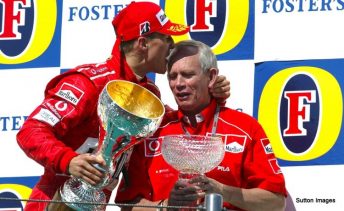
JT: As you mention, another element of Ferrari’s improvement in 2017 may be the return of Rory Byrne to the team last year and his input on the design of this season’s car.
SJ: Rory is one of the top designers ever in F1 history and he’s never received enough credit for what he’s done. He was responsible for every Ferrari Michael Schumacher won with. He designed the winning Benettons before that. Rory is a genius. I think his influence is a significant part of why Ferrari is doing so well again.
JT: With the injury to Sebastien Bourdais at Indy, Ganassi Racing has tabbed Tony Kanaan to replace him in the #68 Ford GT for the Le Mans 24 Hours. Given Kanaan’s experience and the fact that he raced the GT at Daytona earlier this year, he should have no problem being up to speed at Le Mans even though he hasn’t raced there before, correct?
SJ: He’ll be fine. I don’t think his preparation will be any problem with simulator time and by the time you get into the race you do a few double stints and that gets the rhythm going. Looking at the testing times from last weekend at Le Mans it looks like the Ford’s might have a battle on their hands for this year. The BoP (Balance of Performance) changes seems to have slowed them down significantly. I just wish there could be a different way to balance the cars other than this BoP that will always benefit or slow down one car more than the others.
JT: The lap times during the testing were the fastest we’ve ever seen around Le Mans until now, in all categories from LMP1 and especially the LMP2 cars who were almost 10 seconds faster than previous years.
SJ: Yes, the LMP2 cars in particular are now extremely fast. What was interesting is that they were actually faster than the LMP1 in straight line speed too. I’ve said it for some time now, it would be so much better if LMP2 became the main category and they just scrapped the LMP1; with only two teams competing for overall victory it’s become a bit flat. The ACO always seemed to want the fastest cars to be in the 3:30s range, they seem to think that’s a safe zone somehow.
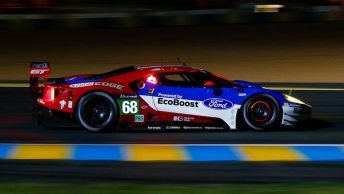
I’m repeating myself again, but I don’t think it would be that hard to make even the GT cars do a high 3:30s if they took the restrictors off and gave them a little wider tyres and some more aero. Get rid of the BoP and let every manufacturer make a car that is within the rules and that fits whatever they need to do win but without the BoP. In other words, may the best man win, period. We would see some incredibly cool looking cars, like the Ford GT, that would be offered to their respective road customer to fill the production to meet the homologation standards. I bet you every car from every manufacturer would be sold out before they start production, just as the Ford is.
JT: We also had the double header IndyCar race in Detroit last weekend. Graham Rahal scored a double win and is the first driver this year to win more than one race. Scott finished a gritty second in the first race and despite a fuel rig issue in the second race finished a good sixth. What do you make of the weekend?

SJ: I think it was a great weekend with some good hard and very competitive racing again. Graham was clearly hooked up the moment they rolled the car of the truck, quickest in nearly every session and walked away with both races. I think every driver dream of those days when your car is just perfect. He didn’t put a foot wrong all weekend and drove with a lot of confidence.
Scott did an amazing job in the circumstances, to have a fractured foot and clearly in a lot of pain there is probably no worse track than Detroit to do a double header race. In the second race, had it not been for the fuel rig problem on his first pit stop it’s safe to assume he would have been second in that race too as he was in front of Newgarden who was on the same strategy and eventually finished second.
There are so many good teams and drivers in IndyCar now that it’s impossible to predict the outcome in any of these races before the weekend starts. Apart from Graham’s double win, there have been seven different winners so far, and Scott who is leading the Championship has yet to win a race. I think that says it all as to how competitive this series is. I’ve said it many times before, but there is no other championship in the world that is close to the racing that IndyCar produces. If they could only find a way to market this it would be huge.



















Discussion about this post